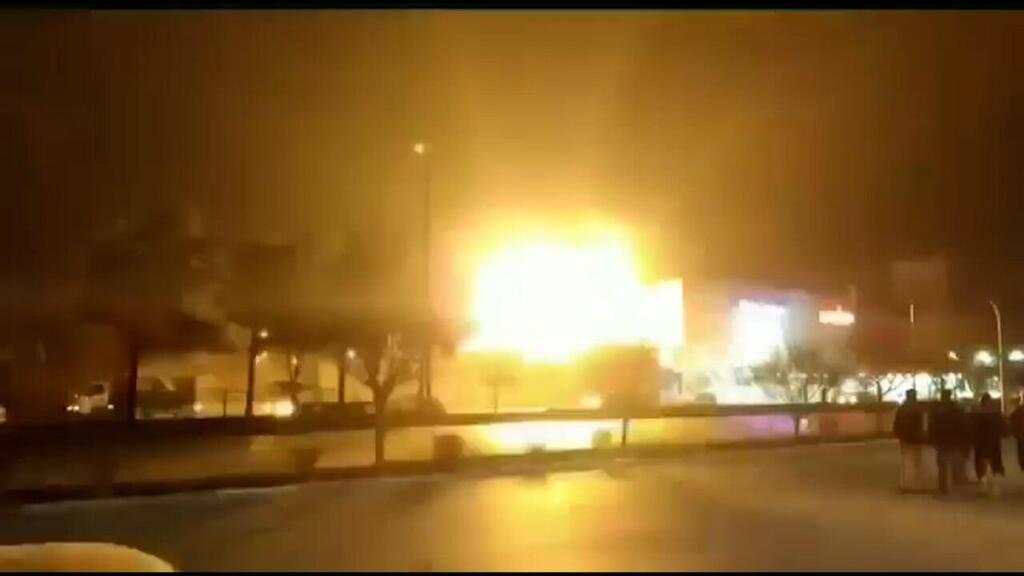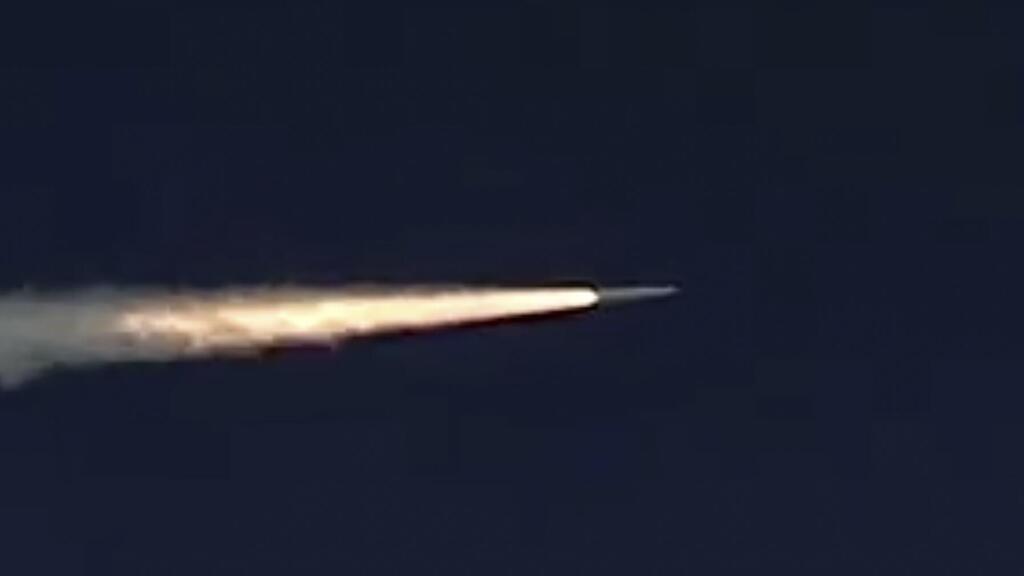Getting your Trinity Audio player ready...
No one has claimed responsibility yet for Saturday's attack in central Iran, but according to all indications, the attacker has highly advanced intelligence and technological capabilities, enabling them to carry out an air strike on a sensitive industrial-military facility of the Islamic Revolutionary Guard Corps (IRGC), a facility protected by an array of air defense batteries.
U.S. officials have pinned the blame on Israel, and it should not be ruled out that this was a spanner in the works of an Iranian attempt to develop hypersonic missiles, a tiebreaker weapon that could circumvent air defenses.
The Iranians reported the attack was carried out by large drones equipped with cameras, navigation sensors, and high amounts of explosives that can be precisely dropped on any target.
The attack on Isfahan apparently ended with a roaring success, and according to Iranian sources, four weapons development facilities not previously used by the Iranians were damaged. The targets hit are located deep within the Islamic Republic of Iran, hundreds of kilometers from the Persian Gulf, the Caspian Sea, and other borders with its neighboring countries. Therefore, these suicide drones were likely launched from Iranian soil.
Only a state actor would have the diverse resources required to pull off such a complex and costly offensive operation, with such precision and success. In the Middle East, there are only three state actors that have such advanced capabilities: The United States, Israel, and to a certain extent, Azerbaijan.
The Americans have an interest in maintaining quiet in the Middle East so they can focus on the war in Ukraine and the strategic-economic conflict with China. Azerbaijan is locked in a conflict with Tehran and its embassy in the Iranian capital was attacked over the weekend, but this does not justify a retaliatory offensive action against an Iranian arms factory, especially one that is so far from Tehran and the Iran-Azerbaijan border.
It is also safe to assume that the Azeris are intimidated by their powerful neighbor, which can harm them in many ways.
Meanwhile, U.S. officials told the Wall Street Journal on Sunday that Israel carried out the nightly attack, and in light of the aforementioned, there is no reason to doubt this statement. It is likely that the operation was initiated and carried out by Mossad, perhaps in cooperation with other actors. The targeted facility could as well have been linked to Iran's nuclear program, and its operations could have posed a great risk to Israel.
But this attack could have targeted another weapon system that might serve only the Iranian nuclear program indirectly, all the rage in precision-guided munitions — hypersonic missiles. The Iranians have an interest in developing such missiles because they can reach 5 times the speed of sound, are very accurate and highly maneuverable. And These kinds of missiles can successfully bypass Israel’s air defense systems.
So far, only Russia and China possess hypersonic weapons, with the former making use of such munitions in its war in Ukraine. The U.S. is developing such missiles at an accelerated pace, but it is still falling behind.
It is likely that the Iranians, perhaps with Russian assistance, are also trying to develop a hypersonic weapon that could be used in the future to launch a nuclear warhead on any target they choose in the Middle East (including Israel of course), Europe, and even the Americas. A hypersonic weapon, even without a nuclear warhead, would give Iran the status of a world military power, allowing it to impose its will thousands of miles away from its borders.
In any case, the unusual attack was apparently intended to signal to Iran — whether it was a hypersonic weapon or not, Israel is monitoring its every move and won't stand idly by.



